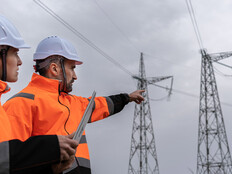More than 80 percent of the wastewater treatment solutions in Cape Cod, Mass., are onsite septic systems.
While having them in place has helped reduce many of the public health threats that can arise from human contact with wastewater, such as cholera, in recent years concerns have intensified about excess nitrogen — a common contaminant found in wastewater — entering the area’s saltwater environments.
An increased nitrogen content can cause algae to grow at a faster pace, depleting the amount of oxygen in the water, says Brian Baumgaertel, senior environmental specialist with the Barnstable County Department of Health and Environment and director of the department’s Massachusetts Alternative Septic System Test Center (MASSTC).
The reduced amount of oxygen can suffocate and shrink marine life habitats, kill fish, and produce other detrimental effects — a potentially alarming scenario in an area like Cape Cod, surrounded by hundreds of miles of coastline.
“Unfortunately, a regular, simple septic system doesn’t remove nitrogen very effectively,” Baumgaertel says. “At the time, they were installed in large volumes, it wasn’t really an issue on anybody’s mind. Now we have this whole other set of problems that have been created.”
Click the banner below to get access to a customized content experience by becoming an Insider.
How States are Improving Wastewater System Operations
The septic systems in use on the cape can generally be replaced with new versions or retrofitted with components to add denitrification capabilities, says Baumgaertel — a process that helps transfer the urea excreted in urine to ammonia, which is then further broken down and eventually dispersed as nitrogen gas.
However, to confirm the process is consistently working and the recommended total maximum daily load limits for nitrogen aren’t being exceeded, the system needs a monitoring element — such as a new sensor MASSTC recently analyzed in its test facility — a sensor created by Qingzhi Zhu, an associate professor at Stony Brook University’s School of Marine and Atmospheric Sciences in New York.
EXPLORE: How to keep local industrial control systems and their data safe.
“Total maximum daily loads are basically a measurement of how much you can put into a water body before you start to have a really strong negative effect,” Baumgaertel says. “The intent is you target the technologies you’re using to remove that number of kilograms of nitrogen per year. The sensor would give you the opportunity to better assess that.”
Measuring 1 cubic foot, the box-shaped prototype is outfitted with small tubes used to collect samples.
“The sensor is a neat little package,” Baumgaertel says. “It’s designed to connect to the cloud and upload results so a system operator or regulator could look at the data in real time and assess whether that individual septic system is removing the amount of nitrogen we were expecting.”
How Technology Can Support Septic System Reinforcement
With the growing focus on climate concerns, Internet of Things-based sensor technology can have a number of environmental applications, says Alan Shark, executive director of the Public Technology Institute.
“Part of it has to do with the compliance,” Shark says. “To the extent state or even local or federal laws are in place to ensure air quality, water quality — that behooves local and state governments to figure out ways to comply through measurement. It really is the regulatory environment that has pushed this further.”
The Environmental Protection Agency estimates more than 2.6 million existing septic systems in environmentally sensitive areas could be upgraded to advanced versions to treat the involved nitrogen and protect valuable coastal terrain.
DIVE DEEPER: How Albuquerque Bernalillo County Water Utility Authority is enhancing its security.
On the cape, MASSTC is currently working with the nitrogen sensor’s creator on a new, broader pilot, testing sensors installed in neighborhood septic systems to gauge how they perform in situations such as very cold weather.
Provided the results continue to be promising, Barnstable County, where Cape Cod is located, is considering ways the sensor might help the community deploy the septic technologies available to remove nitrogen from wastewater, Baumgaertel says.
“We’re trying to identify how we incorporate systems like this nitrogen sensor to offset some of the operational costs,” he says. “Maybe, instead of having somebody physically check on a system once a month, we could have a sensor watching it, so we are saving staff time — and don’t have somebody on the road, so we’re saving greenhouse gas emissions. We’re in the process of figuring out how to make this all come together.”











